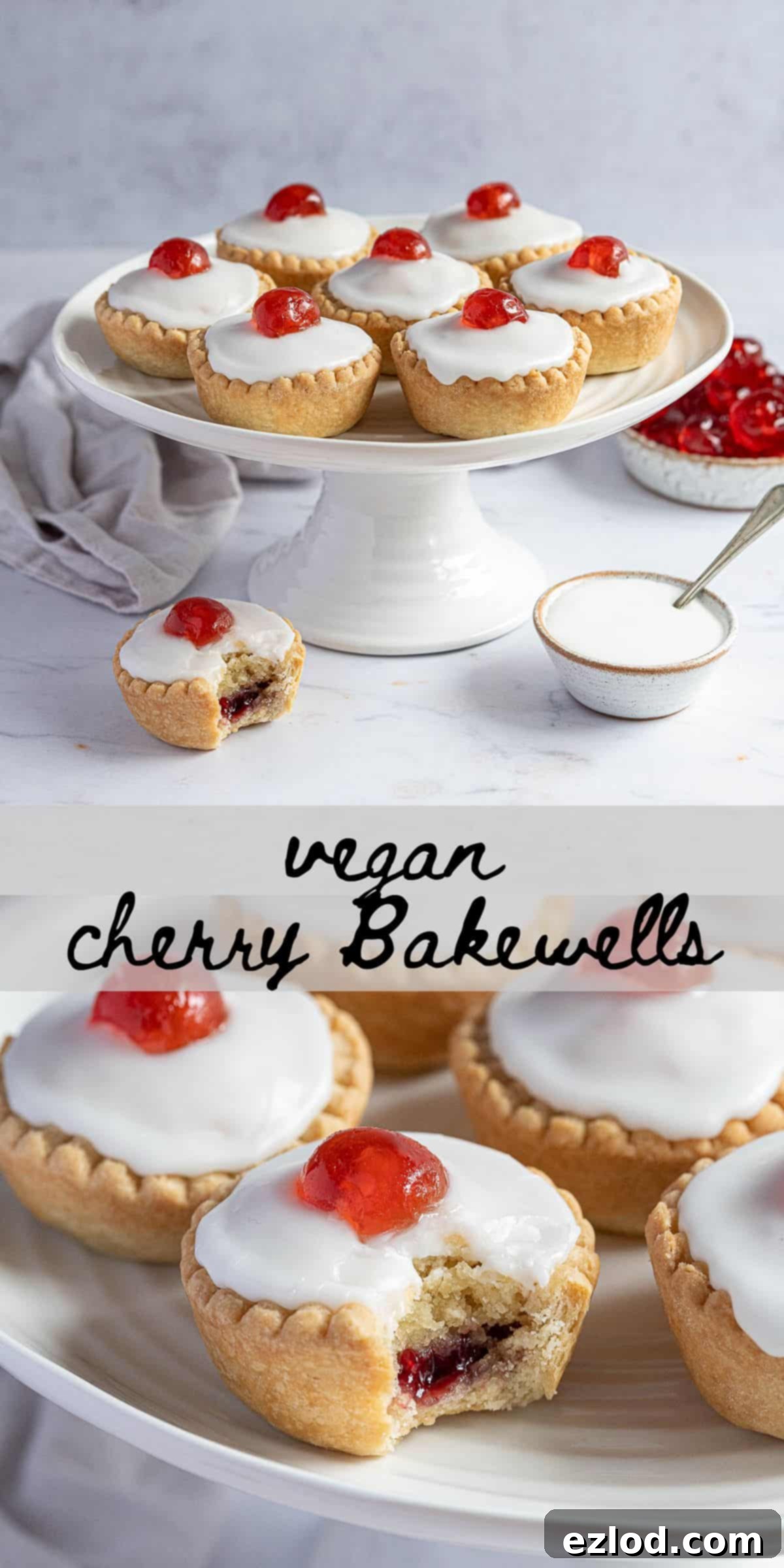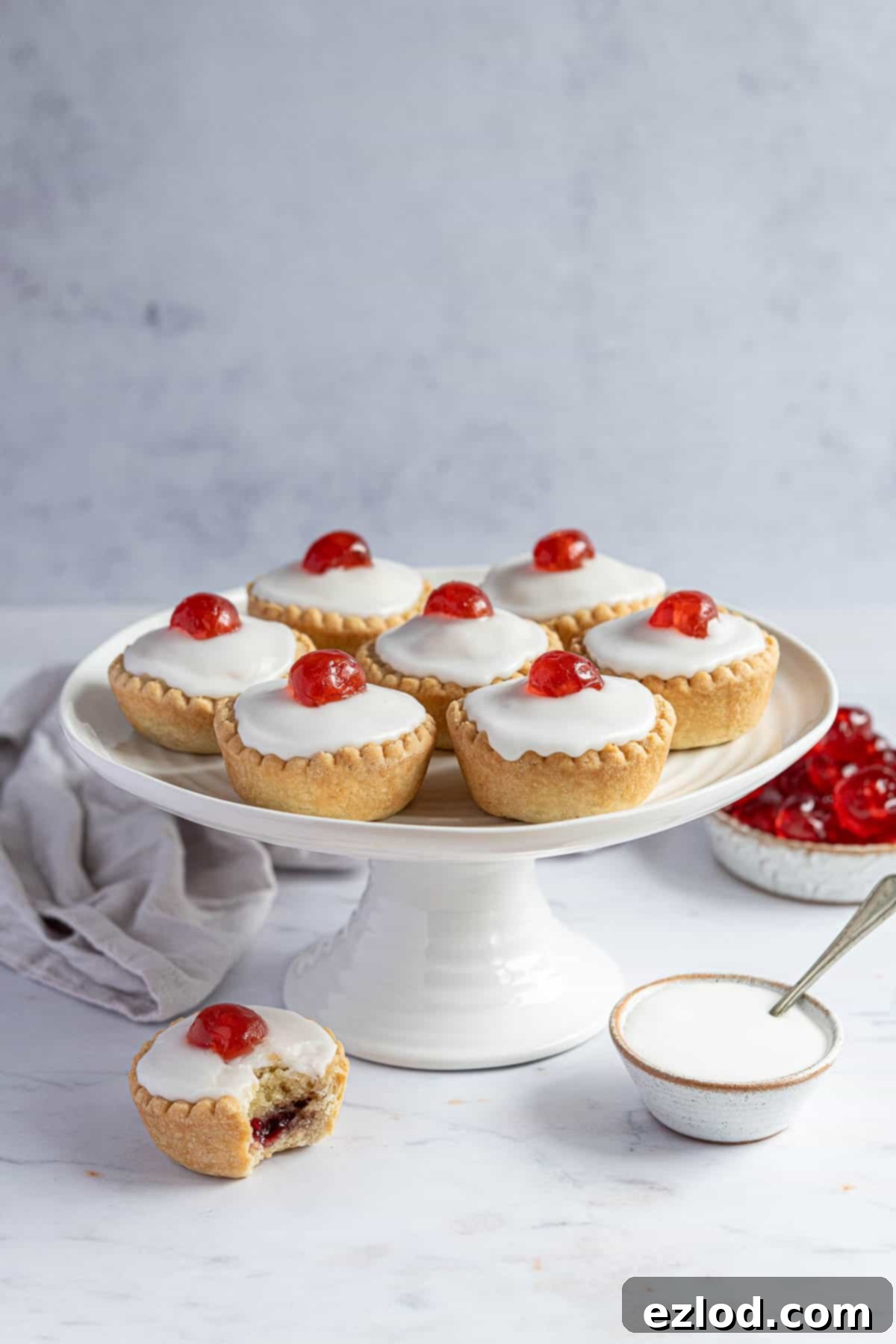Delightful Vegan Cherry Bakewells: A Classic British Bake Reimagined
Prepare to indulge in a timeless British classic, lovingly recreated for a modern plant-based palate. These **Vegan Cherry Bakewells** offer all the nostalgic charm and exquisite flavor of the traditional treat, but entirely without animal products. They are surprisingly easy to make and capture that perfect balance of crisp pastry, sweet jam, tender frangipane, and a signature cherry on top – truly just like you remember, even rivalling those famous Mr. Kipling varieties!
A true icon of British baking, the Cherry Bakewell is a mini tart featuring a perfectly crisp shortcrust pastry shell. This delightful case cradles a luscious layer of sweet jam, topped with a rich, moist almond frangipane. The grand finale is a smooth, sweet icing, crowned with a vibrant glacé cherry. This vegan adaptation ensures that everyone can enjoy this beloved dessert, experiencing every texture and taste exactly as it should be.
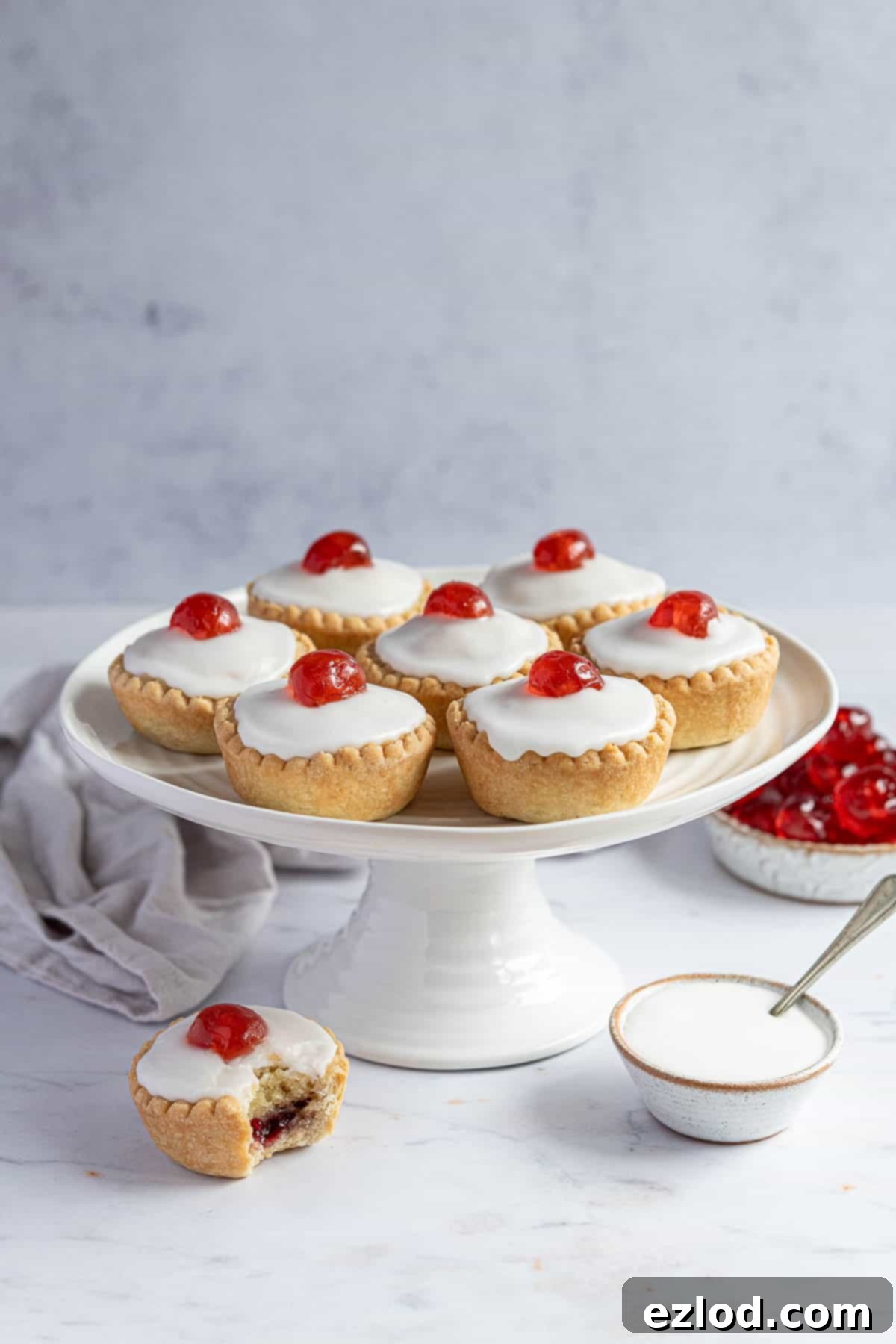
The Cherry Bakewell is a delightful variation of the larger, traditional Bakewell tart. While some purists might argue it’s not a “proper” Bakewell tart, its undeniable deliciousness and status as a cherished childhood favourite make it a bake everyone adores. My vegan version perfectly replicates the crisp shortcrust pastry, the burst of sweet jam, the soft and comforting almond frangipane, and the lovely sticky icing, all finished with that iconic cherry.
Essential Ingredients for Perfect Vegan Cherry Bakewells:
Crafting these delectable vegan Bakewells requires a selection of readily available ingredients, many of which you likely already have in your pantry. Each component plays a vital role in achieving that authentic taste and texture:
Plain Flour: You’ll need standard plain (or all-purpose) flour for both the pastry and the frangipane. It provides the necessary structure and body for these tarts. Avoid using wholemeal flour as it will significantly change the texture. While I haven’t specifically tested a gluten-free version, the frangipane should work well with a good quality plain gluten-free flour blend. For the pastry, you would need to find a dedicated gluten-free shortcrust pastry recipe.
Vegan Butter: This is a crucial ingredient, especially for the pastry. For the best results and to achieve that wonderfully flaky shortcrust, it’s essential to use a block-style vegan butter or margarine. The spreadable varieties found in tubs contain a higher water content, which can make the pastry less crisp and more difficult to work with. Brands like Naturli Vegan Block or Flora Plant Butter are excellent choices that mimic dairy butter beautifully in baking.
Sugar: A combination of sugars ensures the perfect sweetness and texture. You’ll need fine icing (powdered) sugar for the pastry and, more importantly, for creating the signature smooth, thick icing on top. For the frangipane, either caster (superfine) or granulated sugar will work perfectly. It’s important to stick to these types of sugars; alternative sweeteners or unrefined sugars will alter the texture and taste significantly, and are not recommended for this recipe.
Vinegar: A small amount of vinegar, such as apple cider vinegar or white wine vinegar, is added to the pastry dough. Its acidity helps tenderize the gluten, resulting in a more tender and flaky shortcrust. If you don’t have vinegar on hand, an equal amount of lemon juice can be used as a substitute, or you can omit it entirely, though the texture may be slightly less flaky.
Vodka: This might sound like an unusual pastry ingredient, but it’s my secret weapon for achieving truly crispy pastry! The science behind it is simple: vodka has a lower water percentage than pure water. When used to bind the pastry, the alcohol evaporates much faster during baking, leaving behind less moisture and therefore a crispier crust. You absolutely cannot taste the alcohol in the finished Bakewells, as it burns off completely during cooking. If you happen to have a bottle of vodka in your cupboard, I strongly encourage you to try this technique! Of course, plain cold water can be used instead if you prefer.
Ground Almonds: These form the rich, moist base of the frangipane filling. In some regions, particularly the US, this ingredient might be labelled as almond flour. Ensure you use finely ground almonds for the smoothest frangipane.
Cornflour: Also known as cornstarch, a touch of this is included in the frangipane to act as an additional binder and provide a slightly softer, more stable texture. If you don’t have cornflour, you can substitute it with an equal amount of plain (all-purpose) flour without significantly impacting the outcome.
Non-Dairy Milk: For the frangipane, unsweetened non-dairy milk is used to create a smooth, pourable consistency. Soy milk is often recommended for baking due to its higher protein content, which can contribute to a better structure. However, any unsweetened non-dairy milk, such as almond, oat, or cashew milk, will work well. Just make sure it’s unsweetened to avoid overly sweetening the frangipane.
Baking Powder: A tiny amount of baking powder is added to the frangipane. In traditional frangipane, eggs provide lift and structure. In this vegan version, baking powder helps to create a similar lightness and prevents the frangipane from becoming too dense.
Almond Extract: This ingredient is non-negotiable for authentic Bakewell flavour! It provides that distinctive, warm almond aroma and taste. Without it, the tarts simply wouldn’t have enough almond flavour. I also love to add a small drop to the icing for an extra boost of almondy goodness.
Jam: The choice of jam is entirely up to your preference, but a red fruit jam is traditional for Cherry Bakewells. I often use a cherries and berries preserve, like Bonne Maman, for a rich, fruity base. Historically, Mr Kipling’s Bakewell tarts often featured plum and raspberry jam, so feel free to experiment with your favourite red fruit conserve.
Glacé Cherries: No Cherry Bakewell is complete without its signature glacé cherry on top! The bright red, artificially coloured cherries are most traditional and give that iconic look. However, if you prefer, naturally coloured glacé cherries can also be used. Most brands of glacé cherries are naturally vegan, but it’s always wise to check the label and avoid any that list E120 as a colouring agent, as this is carmine (derived from insects).
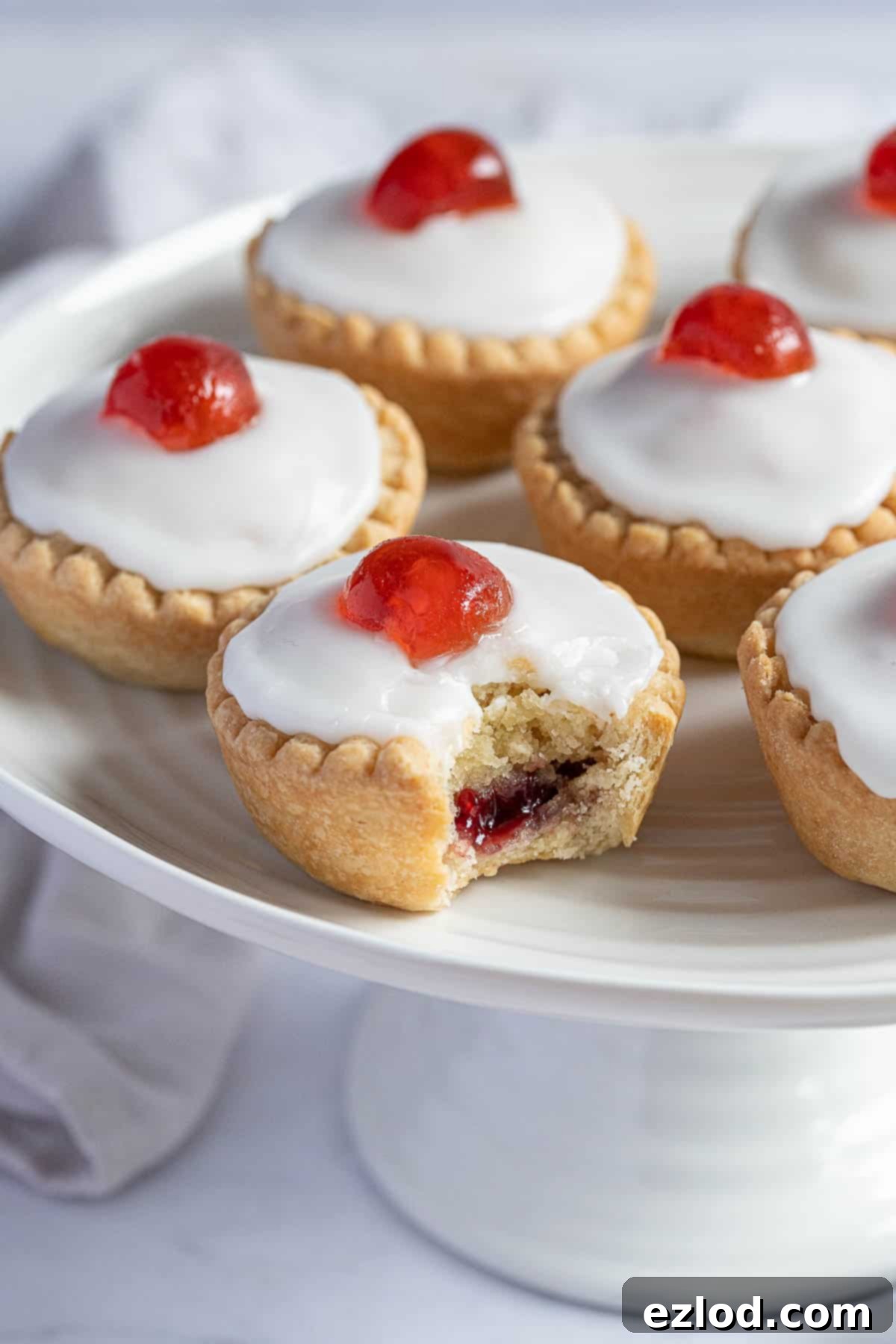
How To Craft Your Delicious Vegan Cherry Bakewells:
(Detailed measurements and step-by-step instructions can be found in the comprehensive recipe card at the bottom of this page. This section provides an overview of the process.)
The journey to homemade vegan Bakewells begins with the pastry, the essential foundation of these delightful tarts. In a large mixing bowl, combine the plain flour, icing sugar, and a pinch of salt. Whisk these dry ingredients together thoroughly to ensure they are well distributed. Alternatively, for speed and ease, you can pulse them briefly in a food processor.
Next, introduce the cold, diced vegan block butter. This cold butter is vital for a flaky pastry. Gently rub the butter into the dry ingredients using your fingertips. The goal is to break down the butter until the mixture resembles fine breadcrumbs, with no visible lumps of fat remaining. If using a food processor, pulse until this consistency is achieved, being careful not to overmix.
Now, add the cold vodka (or water) and vinegar to the crumbly mixture. Mix these in gently. If the dough still seems too dry to come together, drizzle in a very small amount of ice-cold water, one tablespoon at a time, until the pastry forms a cohesive ball. Be cautious not to add too much liquid, as this can make the pastry tough.
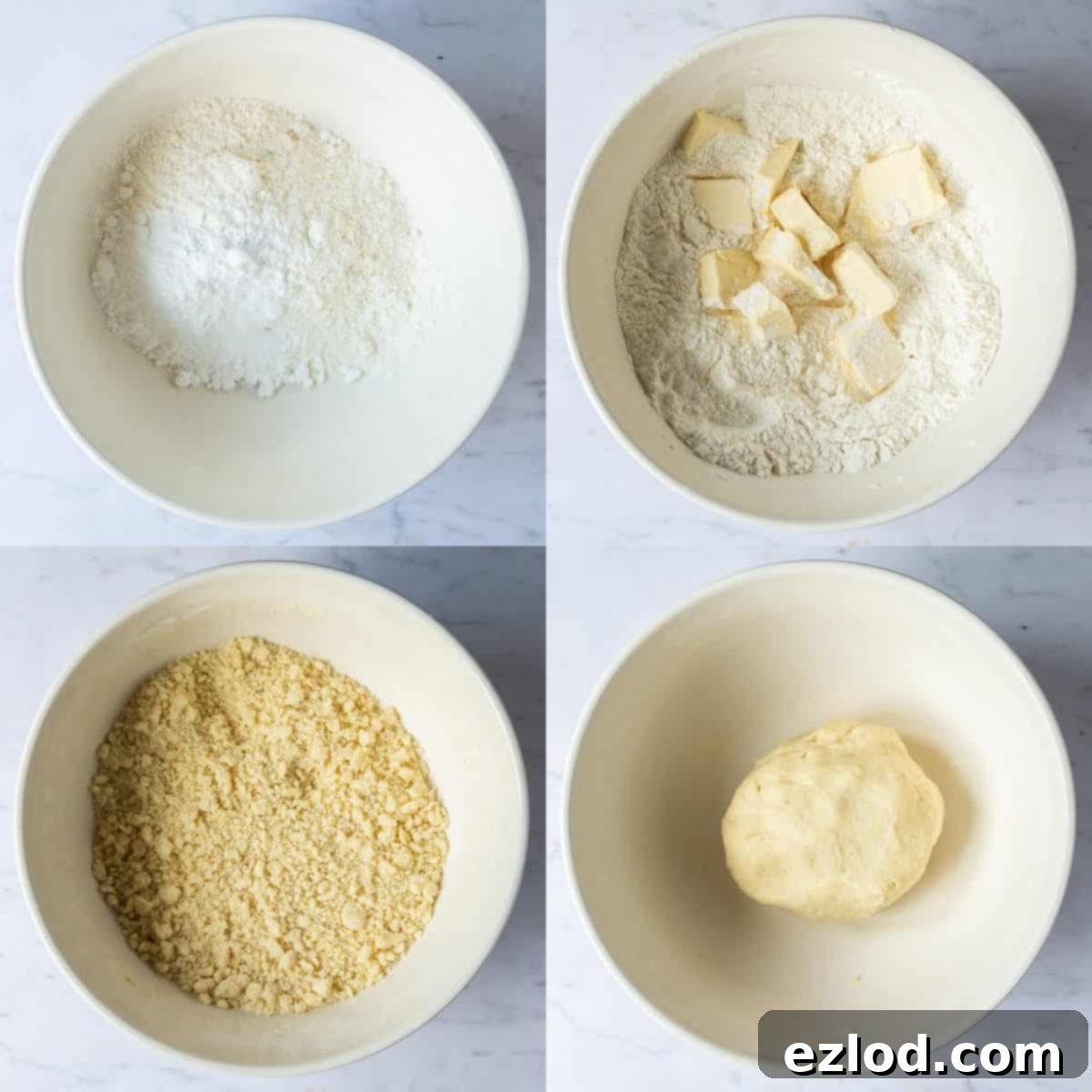
Once the pastry has formed a ball, flatten it slightly into a disc, wrap it tightly in cling film or reusable food wrap, and refrigerate it for at least 30 minutes. This chilling period is crucial as it allows the gluten to relax, preventing the pastry from shrinking excessively during baking, and makes it much easier to roll out.
After the pastry has sufficiently chilled, lightly flour a clean work surface and your rolling pin. Roll out the pastry thinly and evenly, aiming for a consistent thickness. Use a round cutter, approximately 10-11 cm (4-4.5 inches) in diameter, to stamp out pastry circles. If you don’t have a cutter of this size, a small fluted tart tin or even the rim of a glass can work as an alternative.
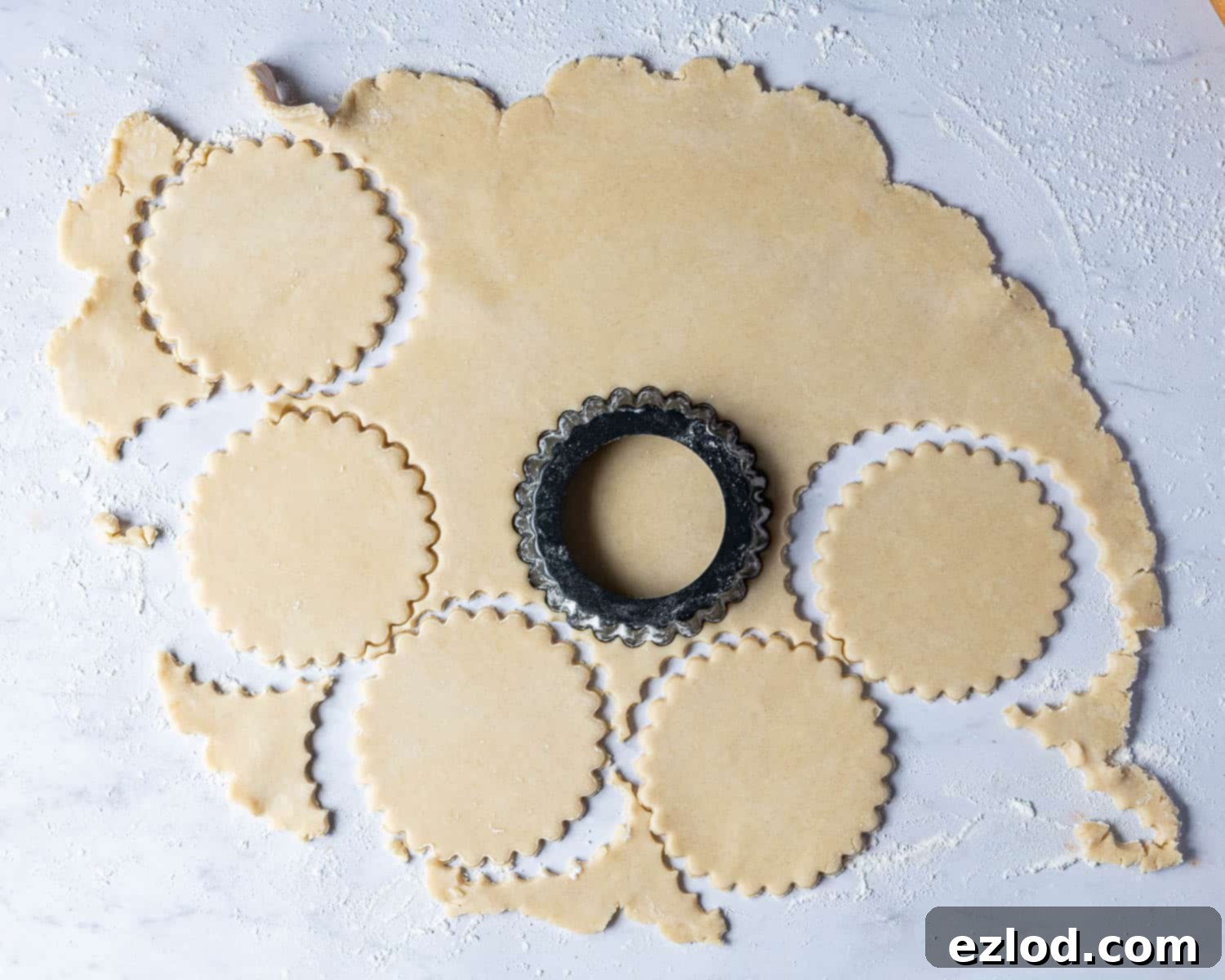
Prepare a standard 12-cup muffin tray by lining each cavity with strips of baking parchment. These strips will act as slings, making it incredibly easy to lift the baked tarts out of the tin without breakage. Gently press each pastry round into the prepared muffin cups, easing it into the corners without stretching the dough too much.
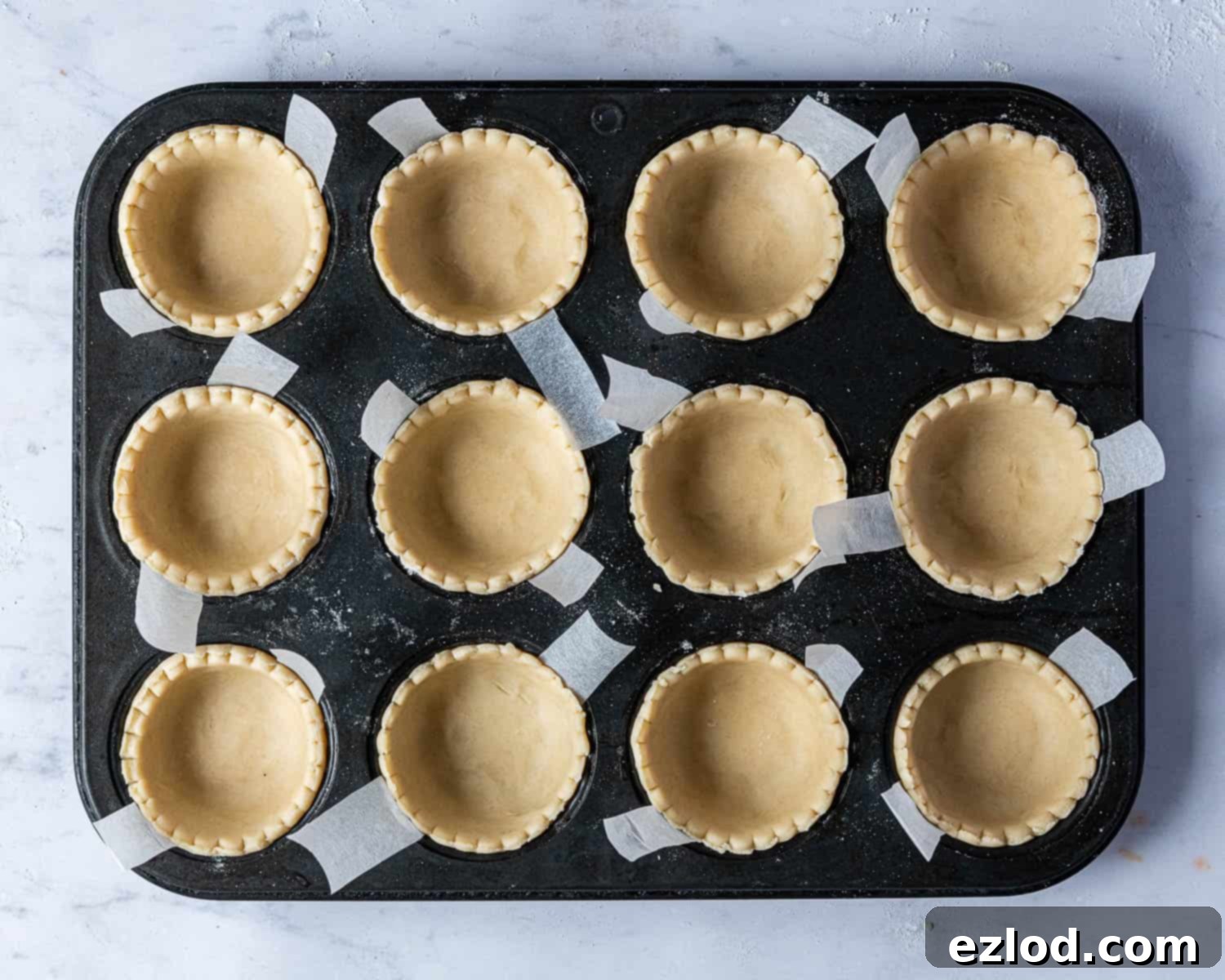
To prevent shrinkage and ensure an extra crispy crust, place the lined muffin tray, complete with the pastry cases, into the freezer for about 15 minutes. While the pastry chills, preheat your oven and prepare the delicious frangipane filling.
For the frangipane, combine the ground almonds, plain flour, cornflour (or extra plain flour), baking powder, and sugar in a bowl. Whisk these dry ingredients together thoroughly.
Then, add the non-dairy milk, melted vegan block butter, and almond extract. Whisk everything together until the mixture is completely smooth and free of any lumps. The consistency should be thick but pourable.
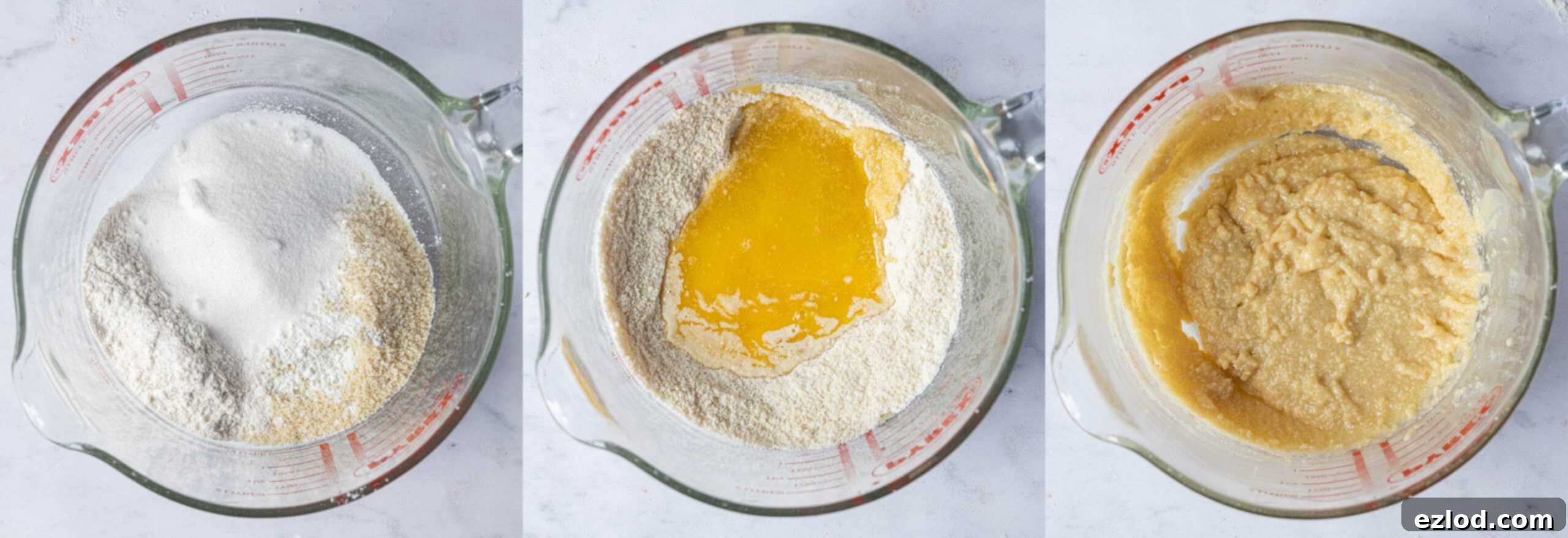
Now it’s time to assemble your Bakewells. Place a teaspoon of your chosen jam into the bottom of each chilled pastry case. Distribute the frangipane filling evenly among all 12 cases, carefully spreading it with the back of a spoon to ensure the jam layer is fully covered. Aim for a neat, level surface.
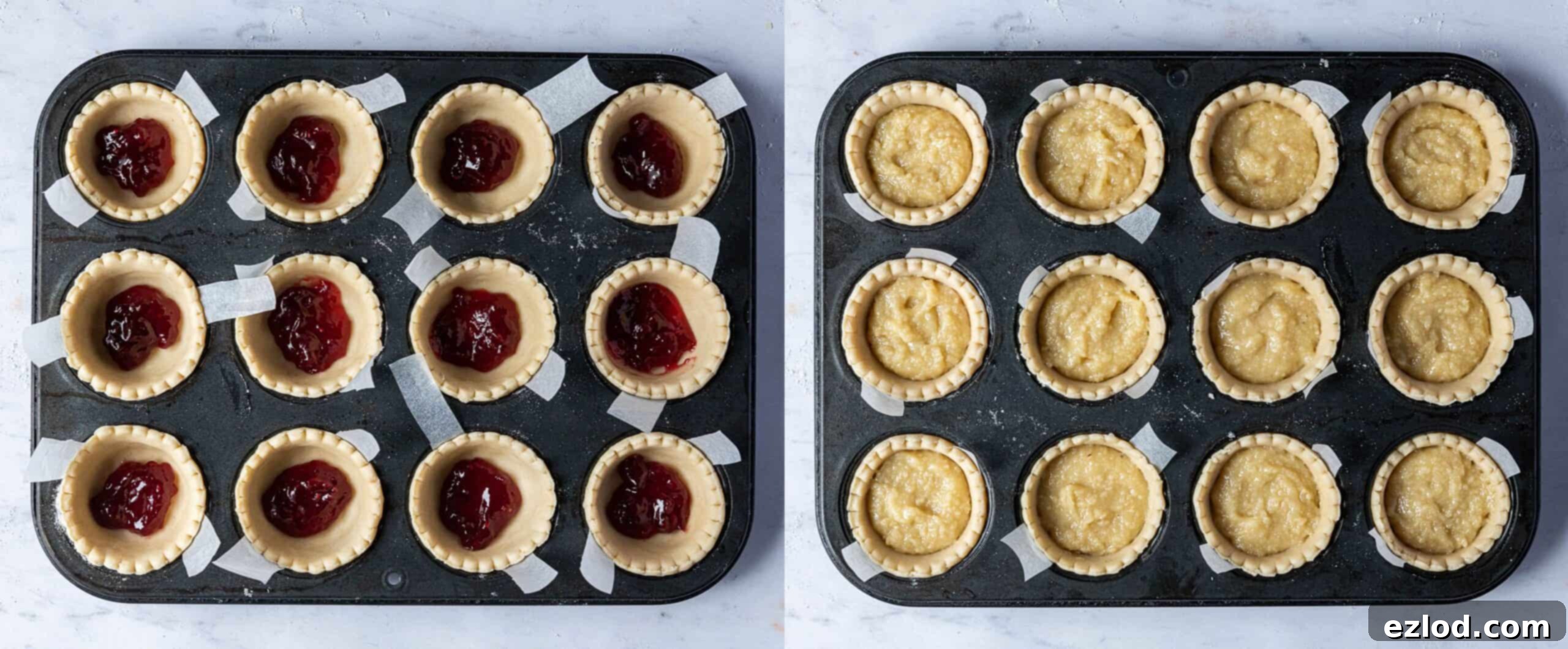
Bake the tarts in your preheated oven for approximately 25 minutes, or until the frangipane is golden brown and set in the centre. If you notice the frangipane puffing up too much during baking, you can gently press it back down with the back of a spoon shortly after removing them from the oven.
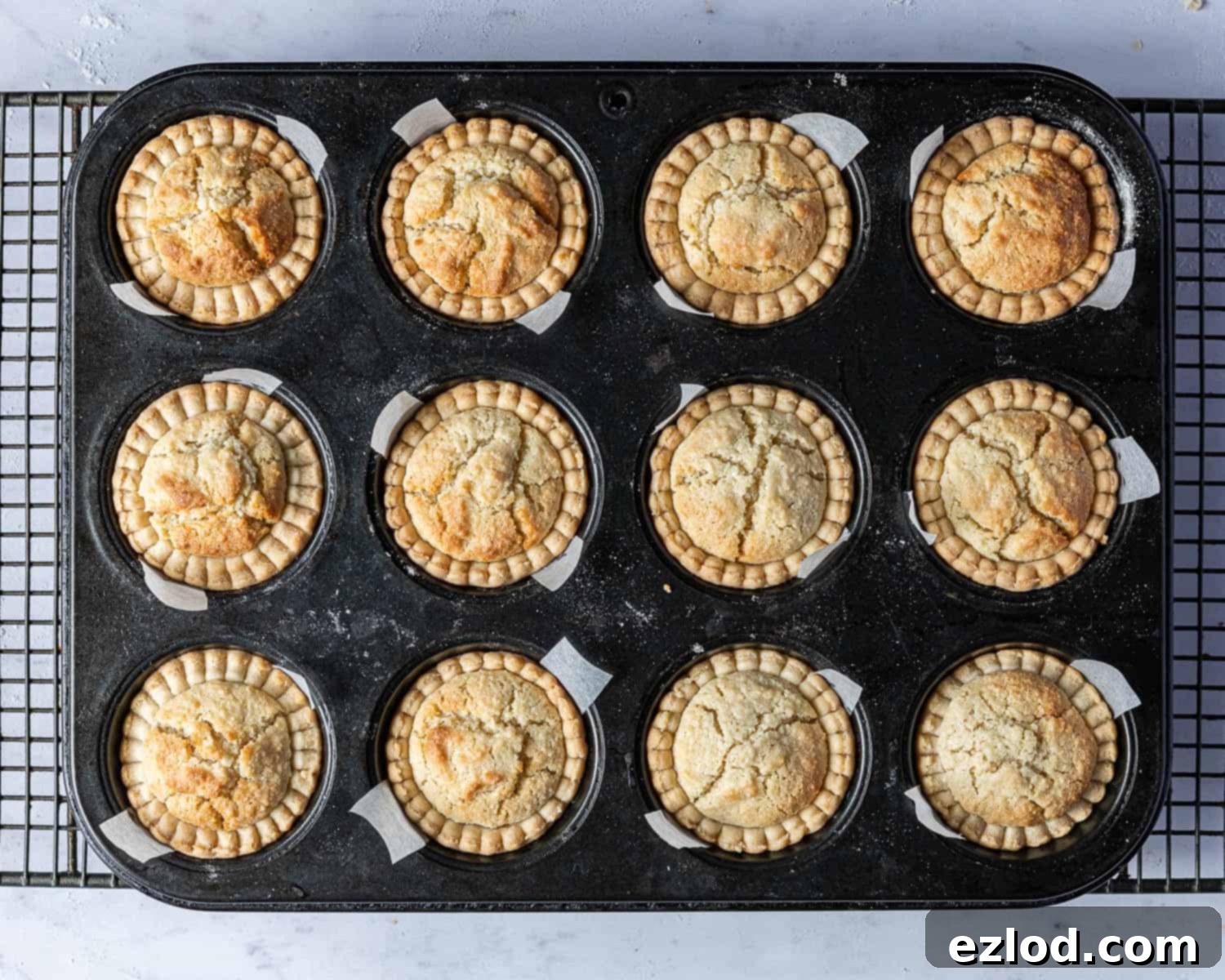
Allow the tarts to cool completely on a wire rack before icing. Once cooled, prepare the classic Bakewell icing. Sift the icing sugar into a bowl to remove any lumps, then add a drop of almond extract for enhanced flavour. Gradually stir in tiny amounts of cold water, literally a drop at a time, until you achieve a thick, but still spreadable, consistency. The icing needs to be stiff enough to hold its shape on the tart without running off the sides.
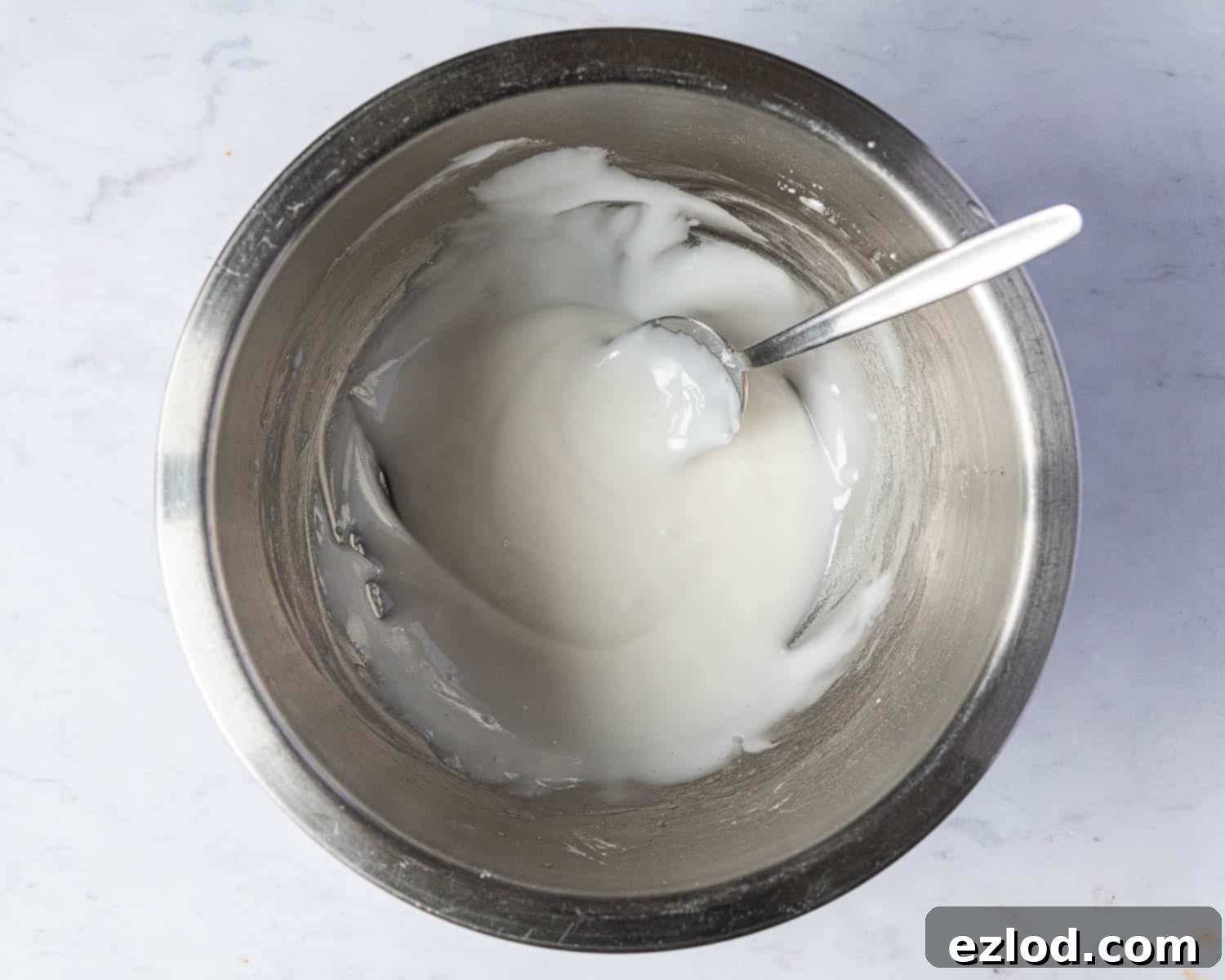
Generously spread a spoonful of the prepared icing over the top of each cooled tart. For the final, iconic touch, place half a glacé cherry directly in the centre of each iced Bakewell. Allow the icing to fully set before serving to ensure a beautiful finish and prevent smudging. These vegan cherry Bakewells are an absolute delight, perfect for afternoon tea or a sweet treat anytime!
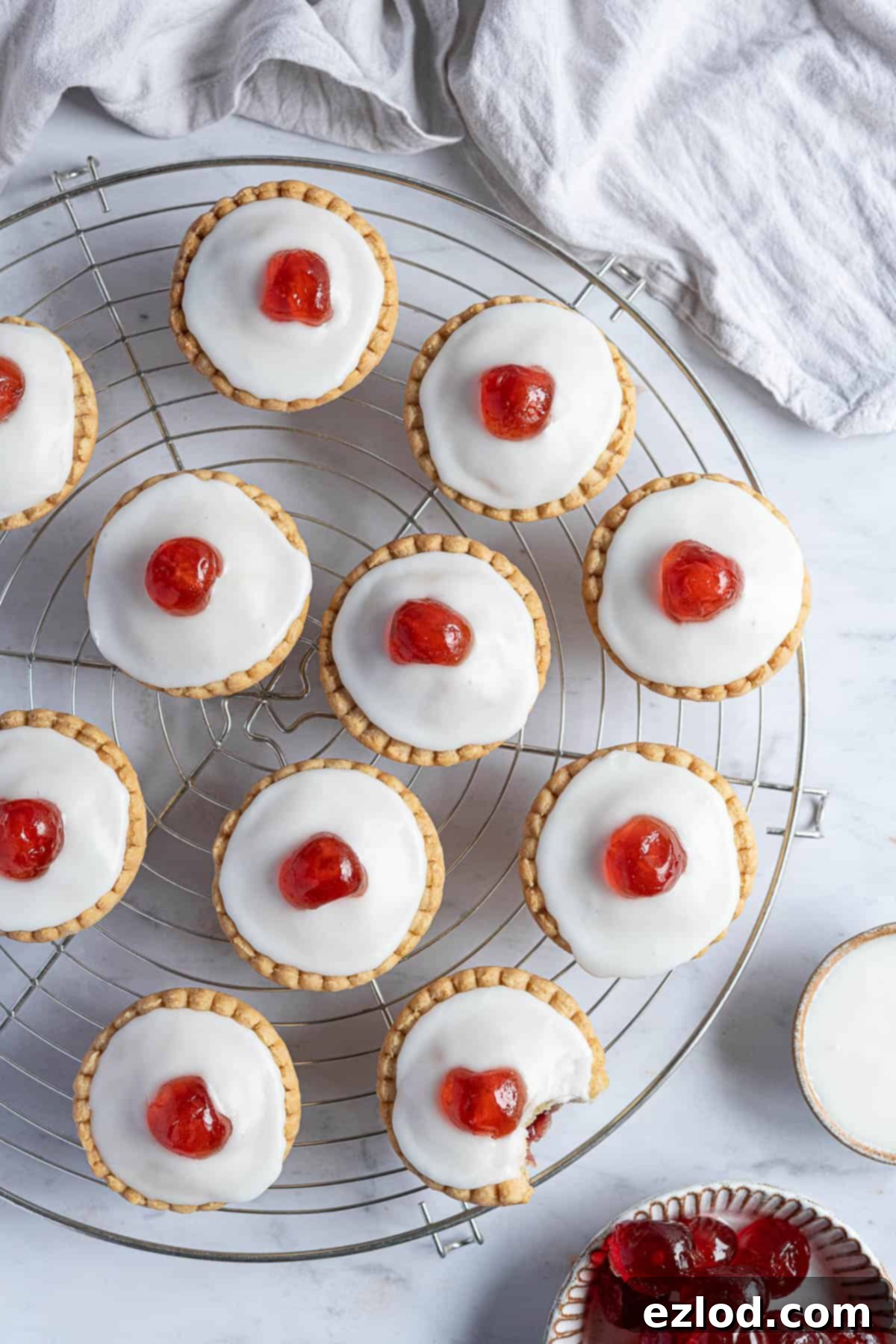
Expert Tips for the Best Vegan Cherry Bakewells:
Achieving bakery-quality vegan Bakewells at home is entirely possible with a few insider tips:
- Precision is Key: As with all my baking recipes, I wholeheartedly recommend using metric measurements with a digital kitchen scale rather than relying on cup conversions. Cups are notoriously inaccurate and inconsistent, leading to varied results. A digital scale ensures precise ingredient ratios, which is fundamental for consistent and successful baking outcomes, not to mention it’s often cleaner and easier!
- Handle Pastry with Care: For the flakiest, crispiest shortcrust pastry, it’s crucial not to overwork the dough or allow it to become too warm. Excessive handling develops the gluten, resulting in a tough crust. Keep everything cold – your hands, ingredients, and even your work surface if possible. Freezing the pastry shells for 15 minutes before baking is a game-changer; it helps firm up the butter, minimizes shrinkage, and contributes significantly to that desirable crispy texture.
- Vodka for Crispiness: Don’t skip the vodka if you have it! As mentioned earlier, vodka’s lower water content compared to water allows it to evaporate more quickly during baking. This rapid evaporation leaves behind a drier, crisper pastry. Rest assured, you won’t taste any alcohol in the final product as it all bakes off. If vodka isn’t an option, cold water is perfectly acceptable, but for that extra crunch, vodka is the way to go.
- Pastry Scraps: You will likely have some leftover pastry scraps after cutting out the initial rounds. Gather these gently, press them together (without kneading), and re-roll to cut out additional circles. However, try to avoid re-rolling the pastry too many times, as this can make it tough. It’s better to have a bit of waste than to force an over-worked, chewy pastry onto your delicious Bakewells.
- Time-Saving Alternative: If you’re short on time or prefer a quicker approach, you can certainly use store-bought shortcrust pastry. Many brands offer vegan-friendly options; for example, Jus-Rol pastry is widely available and vegan (just be sure to avoid their ‘all-butter’ variety).
- Perfect Icing Consistency: The icing is more than just a topping; it’s an integral part of the Bakewell experience. It needs to be quite thick – think stiff but still spreadable – to ensure it doesn’t run off the sides of the tarts. A good test is to stir the icing; if the surface smooths out within about 7 seconds, it’s generally a good consistency.
- Test Your Icing: It’s a smart idea to ice one tart first and let it sit for a minute to see how the icing settles. If it appears too runny, gradually stir in a little more sifted icing sugar. If it’s too stiff to spread smoothly, add water one tiny drop at a time until you reach the perfect consistency. Patience here will be rewarded with beautifully finished tarts.
Storing Your Vegan Cherry Bakewells:
To keep your delicious vegan cherry Bakewells fresh and enjoyable, store them in an airtight container at room temperature. They will remain wonderfully fresh for up to five days. If you are in a particularly warm climate or during hot weather, you might prefer to store them in the refrigerator to prevent the icing from becoming too soft or sticky.
Can I Freeze Vegan Cherry Bakewells?
Yes, these vegan Bakewells freeze well! You can freeze them in an airtight container for up to three months. When you’re ready to enjoy them, simply allow them to defrost at room temperature for a few hours before serving. Be aware that the icing may become slightly stickier upon thawing, but the flavour and texture of the tart itself will remain excellent.
Explore More Classic British Vegan Bakes:
If you’ve enjoyed transforming this classic British treat into a vegan delight, you’ll be thrilled to discover many more plant-based versions of traditional British bakes on my British recipes page. Here are just a few to get you started on your next vegan baking adventure:
- Vegan Angel Cake
- Vegan Sticky Toffee Pudding
- Vegan Battenberg
- Vegan Earl Grey Tea Loaf
- Vegan Shortbread Fingers
- Vegan Scones
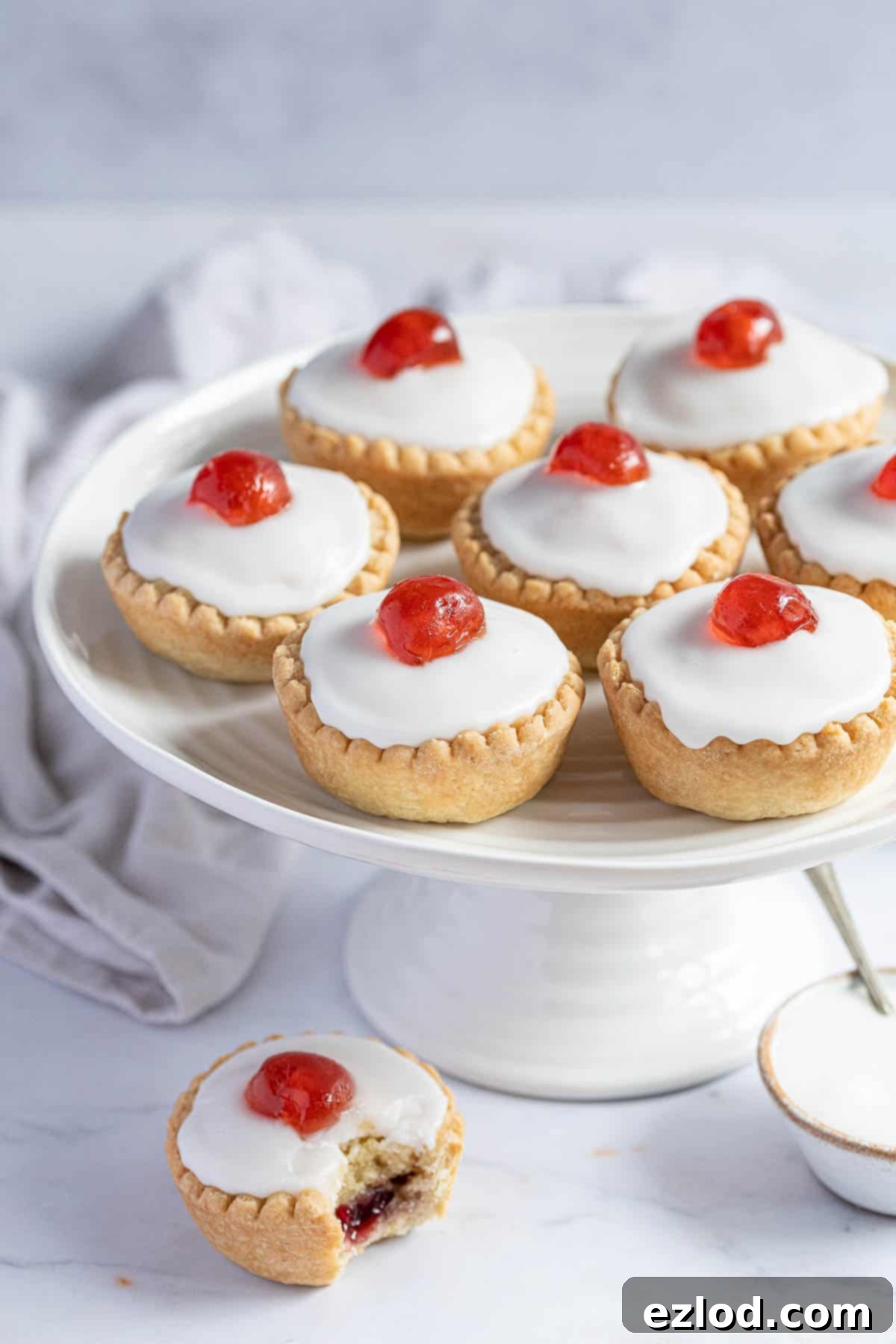
I’d love to hear how your vegan Bakewells turn out! If you try this recipe, please share your experience. You can rate it, leave a comment below, or tag @domestic_gothess on Instagram and use the hashtag #domesticgothess to share your creations!
All images and content featured on Domestic Gothess are protected by copyright. If you wish to share this recipe with others, please use the provided share buttons. Please do not screenshot, copy, or republish the recipe or content in full. Instead, kindly include a direct link back to this original post for the complete recipe. Your understanding and support are greatly appreciated!

Print
Vegan Cherry Bakewells
Ingredients
Pastry:
- 280 g (2 ¼ cups) plain (all-purpose) flour
- ¼ teaspoon salt
- 2 Tablespoons icing (powdered) sugar
- 160 g (⅔ cup) vegan block butter/margarine (I use Naturli Vegan Block) cold and diced
- 1 teaspoon vinegar or lemon juice
- 1 Tablespoon cold Vodka (or water)
- about 1 Tablespoon ice cold water
Frangipane:
- 100 g (3 ½ oz) ground almonds
- 30 g (¼ cup) plain (all-purpose) flour
- 5 g (½ Tablespoon) cornflour (cornstarch) (or more plain flour)
- ¼ teaspoon baking powder
- 70 g (⅓ cup) caster (superfine) sugar
- 50 g (3 Tablespoons + 1 teaspoon) melted vegan block butter
- 50 ml (3 Tablespoons + 1 teaspoon) unsweetened non-dairy milk
- ½ teaspoon almond extract
- 12 teaspoons jam (I use berries and cherries flavour)
Icing:
- 200 g (1 + ⅔ cup) icing (powdered) sugar sifted
- drop of almond extract
- 6 glacé cherries halved
Instructions
-
Start by making the pastry. Place the plain flour, icing sugar and salt in a large bowl and whisk to mix or place them in a food processor and pulse until combined.
-
Add the cold diced vegan block butter and rub it in using your fingers or blend with the food processor until the mixture resembles fine breadcrumbs and no lumps of fat remain.
-
Add the cold vodka (or water) and vinegar and mix; drizzle in a little cold water as needed to bring the pastry together into a ball.
-
Cover the pastry and pop it in the fridge for half an hour until it has firmed up a bit.
-
Once the pastry has chilled, roll it out thinly on a floured surface. Use an approx 10-11cm cutter to cut out rounds (I use a small fluted tart tin as I don’t have a cutter big enough).
-
Line a 12 cup muffin tray with strips of baking parchment – this makes it easy to get the baked tarts out of the tin. Gently press the pastry rounds into the prepared tin.
-
Re-roll the pastry scraps and cut out more rounds as needed until you have filled all 12 cavities.
-
Place the muffin tray in the freezer for 15 minutes while you preheat the oven to 190°C/170°C fan/375°F/gas mark 5 and prepare the filling.
-
To make the frangipane, whisk together the ground almonds, plain flour, cornflour, baking powder and sugar.
-
Add the milk, melted butter and almond extract and whisk until smooth.
-
Place a teaspoon of jam in the bottom of each of the pastry cases. Divide the frangipane evenly between the cases and spread it level, making sure that the jam is fully covered.
-
Bake the tarts for 25 minutes until golden. If the frangipane has puffed up too much, gently press it back down a little.
-
Lift the tarts out of the tin using the strips of baking parchment and place them on a wire rack to cool.
-
Once the tarts are cool make the icing. Place the sifted icing sugar in a bowl and add a drop of almond extract. Stir in a little cold water, a drop at a time, until you have a very stiff but spreadable icing.
-
Spread a generous spoonful of the icing over the top of each tart and place half a glacé cherry on each. Allow the icing to set before serving.
Notes
- As with all of my baking recipes I really do recommend using the metric measurements with a digital scale rather than the cup conversions. Cups are a wildly inaccurate measuring system and you will get far better, more consistent results using a scale, not to mention that it is also easier and less messy than cups!
- You will probably have a bit of waste pastry, but it is better to not have to re-roll it too many times to cut out enough rounds. Overworked pastry is tough.
- The icing needs to be very thick so that it doesn’t run off the tops of the tarts. It should be quite stiff but still spreadable and if you stir it the top should smooth out after about 7 seconds.
- It may be a good idea to ice one tart, give it a minute for the icing to settle and then see how it looks. If the icing is too runny then stir in some more sifted icing sugar, and if it is too thick then add a drop of water (literally a drop at a time!).
